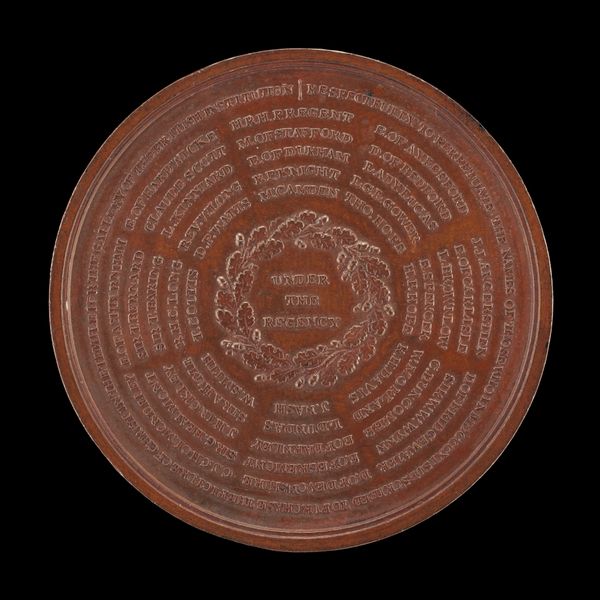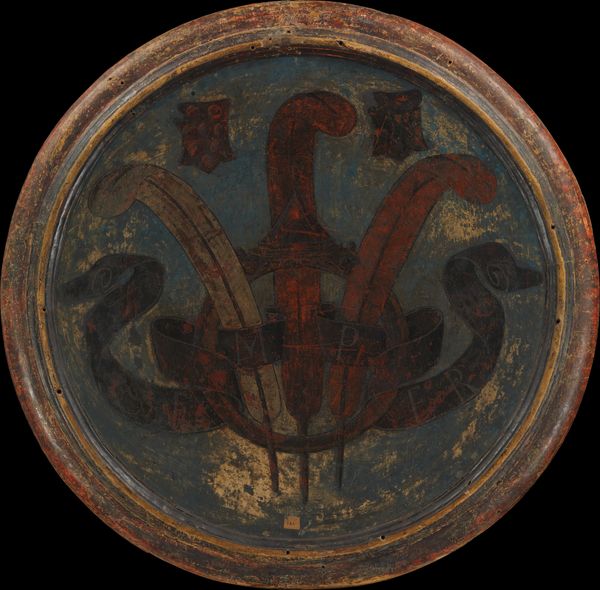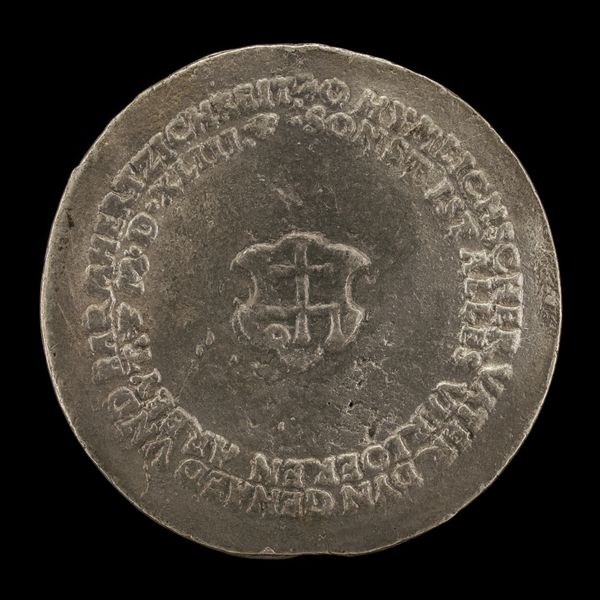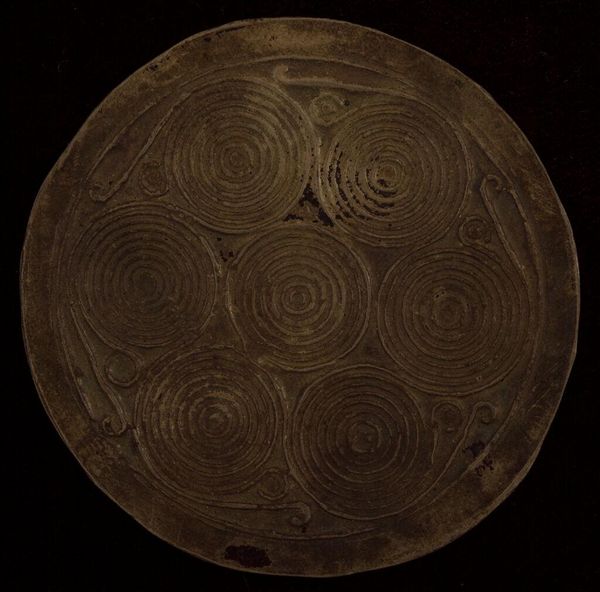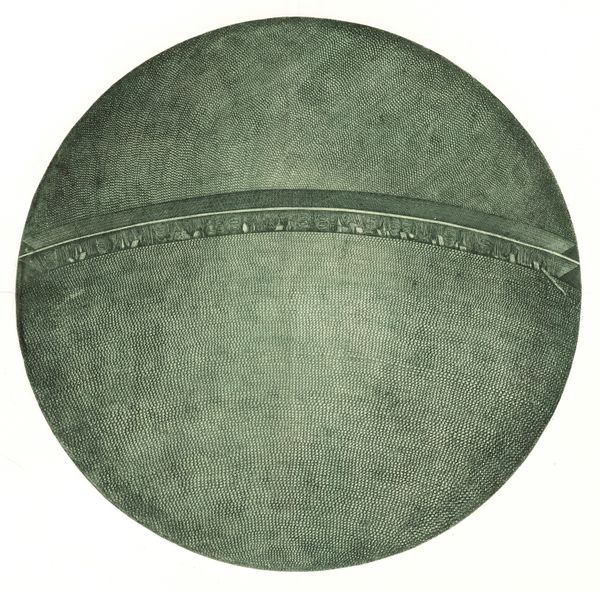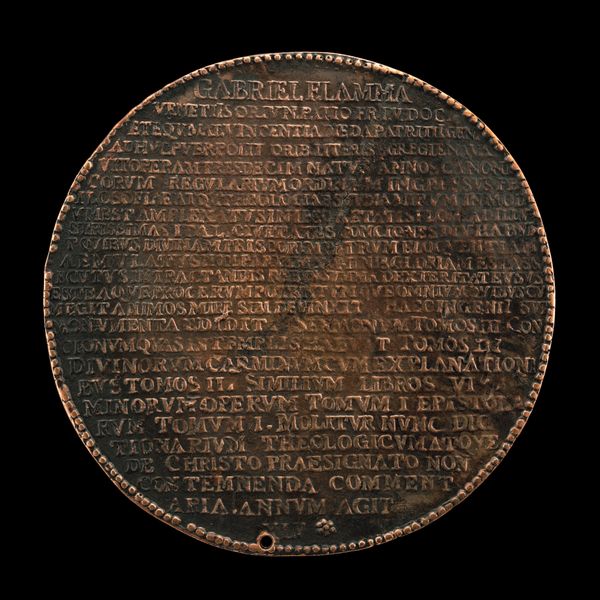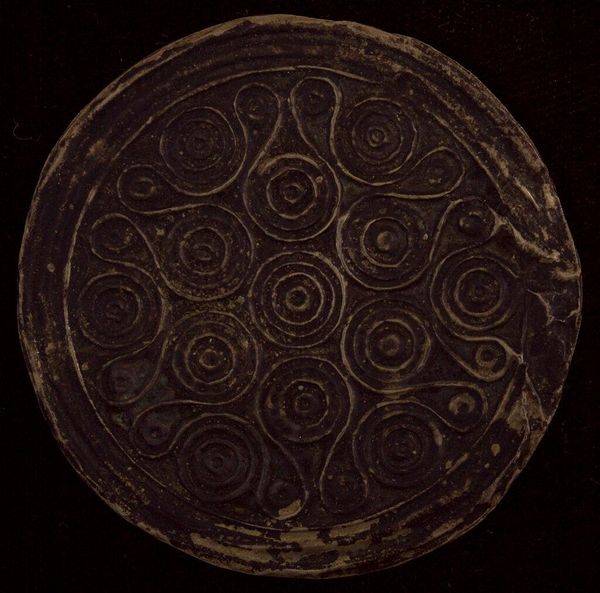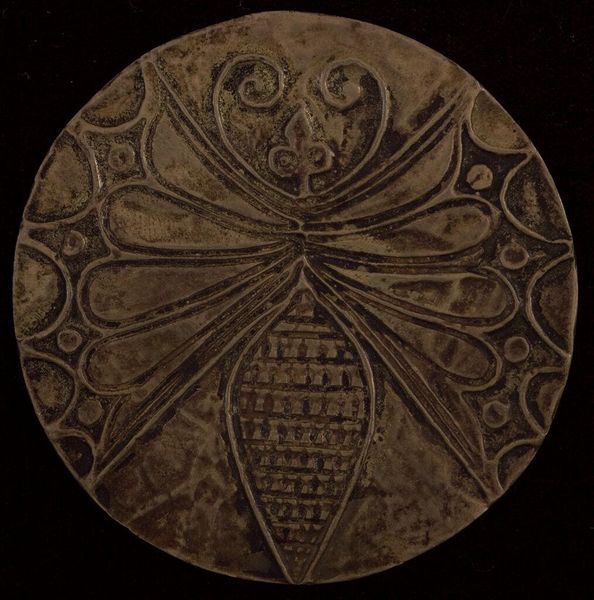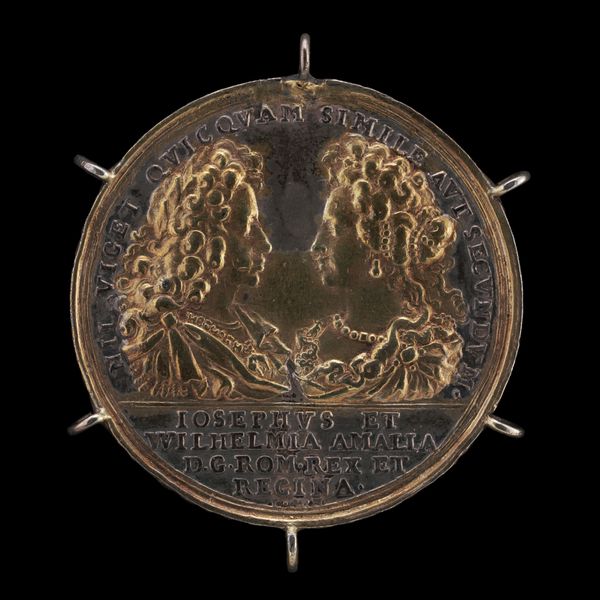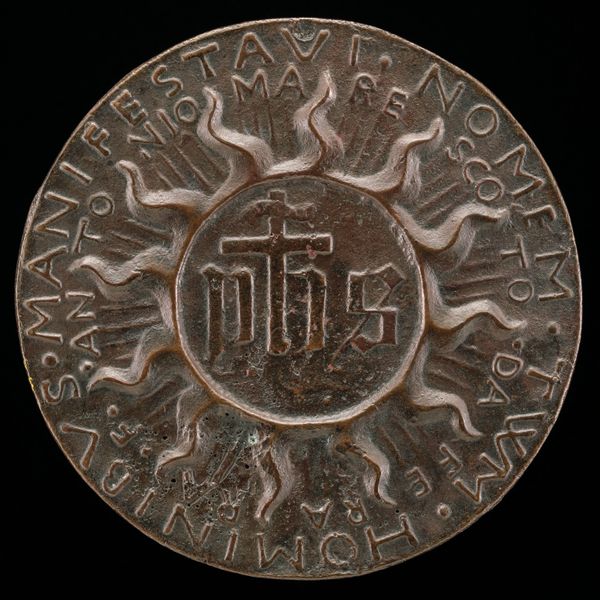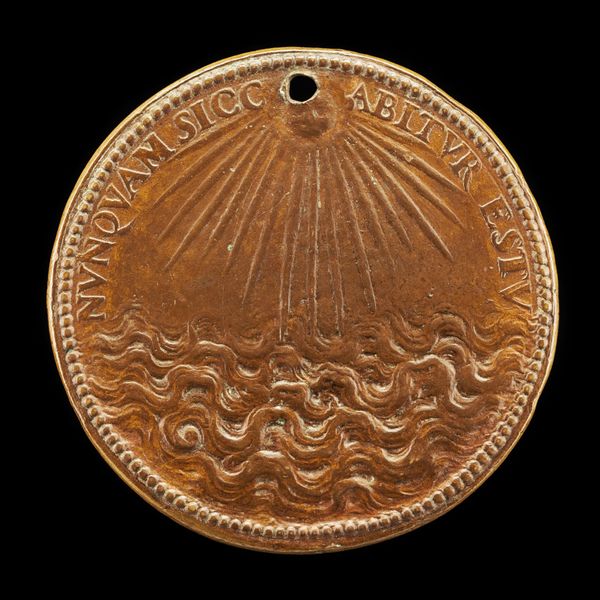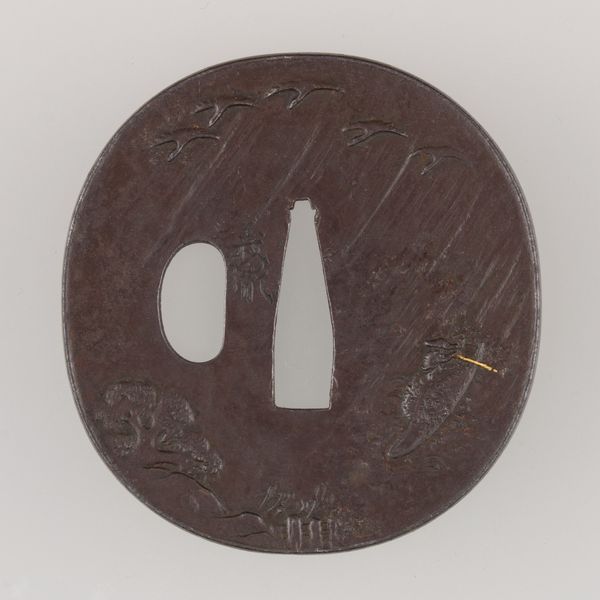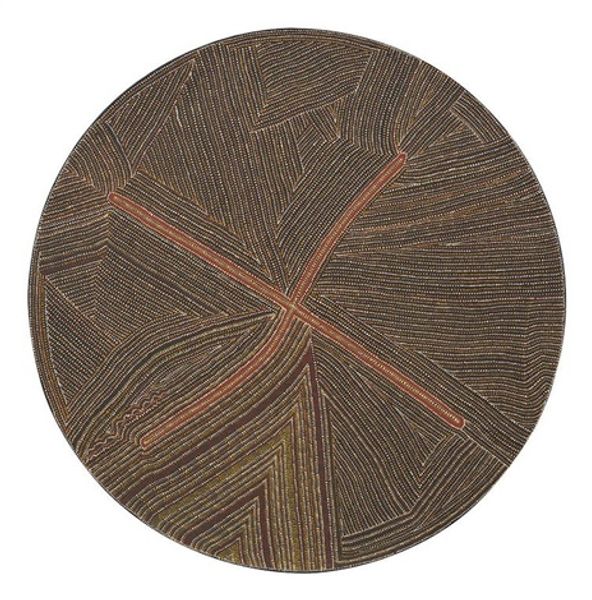
Copyright: National Gallery of Art: CC0 1.0
Editor: This relief sculpture, "Inscription (reverse)," made by Josette Hébert-Coëffin in 1951, presents a series of enigmatic symbols etched onto a circular metal surface. The almost talismanic quality really intrigues me. How do you interpret this work within its historical context? Curator: It's fascinating how Hébert-Coëffin uses abstract-expressionism to evoke a deeper cultural narrative. What stands out is the intentional obscurity. Do you think this abstraction provided the artist freedom in the repressive socio-political environment of the time? Editor: That’s a good point! I hadn’t considered that angle. The personal and political intertwining within the symbolism itself – almost like coded messages. Does the museum setting alter or amplify these potential interpretations? Curator: Absolutely. The institutional space has the power to validate certain narratives while potentially obscuring others. Our curatorial choices, how we contextualize the work, affect the audience's interpretation and ultimately its cultural impact. Think about how this work would be perceived if it was displayed outside versus inside the gallery. Editor: That makes a lot of sense. Considering its accessibility and public perception is an important facet of understanding the work. What I’m seeing is its fascinating cultural story and its subtle rebellion within the abstract-expressionist mode. Curator: Precisely! This piece prompts us to think about the interplay between personal expression, historical forces, and the mediating influence of institutions on our understanding of art. Editor: Thank you for this insightful analysis. It's really widened my perception of the artist's intent. Curator: My pleasure! This kind of art compels us to rethink the social life of the art itself.
Comments
No comments
Be the first to comment and join the conversation on the ultimate creative platform.
